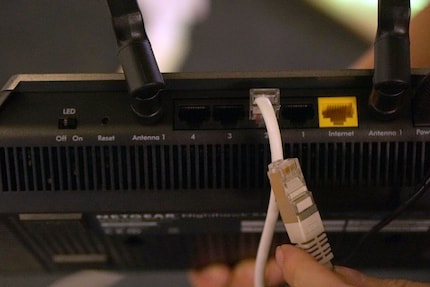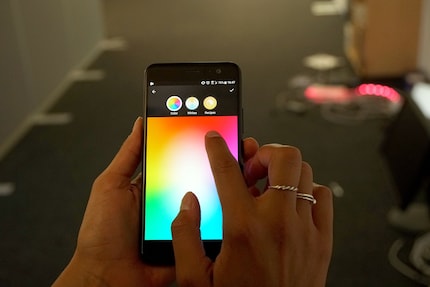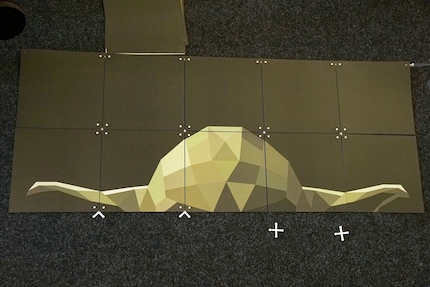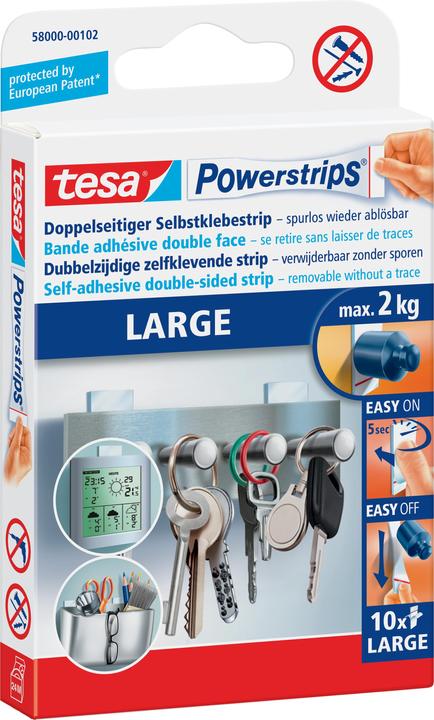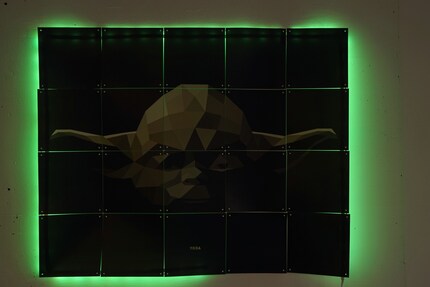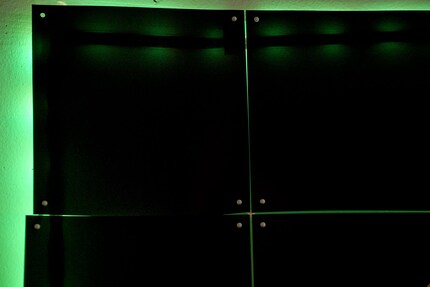

Project illuminated Star Wars poster: The failed first attempt
The idea sounds good: Star Wars poster plus LED strip equals lightsaber atmosphere. Conveniently, this works quite well with a Yoda print from Ixxi and LED strips from Philips. Nevertheless, I fail in the end. Help.
May the Force be with you! Of course, I also came up with something for Force Friday and combined two of my favourite things: Wall decorations and lights. I combined Philips Hue Light LED Strips with a Yoda Art Print from Ixxi. Since my craft projects always have to have a smart aspect according to my boss, I thought I'd make a kind of smart poster. If you haven't seen anything like this before, you can now.
The basic idea is simple: I want my Yoda poster to have a green backlight.
The preparation
Your home needs a functioning WLAN. Fortunately, this is already standard in the vast majority of households, so all you need is a free RJ45 socket at the back of the router that operates your Wi-Fi.
I put the whole poster together in the office, which is why I had to set up a WLAN without further ado. So, I got the router, network cable and power strips out of the junk room and quickly set up a network. This was by far the longest part of the story, but it has the advantage that I can show you the setup from all angles.
In short: plug your Hue Bridge into the router.
Let there be light
Now all you have to do is connect your smartphone to your Wi-Fi, open the Hue app and follow the instructions on the screen.
If you have done everything correctly so far, the app will find the LEDs itself. You can then give them a name, specify the room they are in and set the colours afterwards.
This is where we disagree in the office. For me, it's clear: the Yoda picture is illuminated in green. My colleague Léonie de Montmollin disagrees, but thinks out loud: "You can't get the green of the poster right. We have 16 million colours, but because the image is quite dark, we have to think about whether we want a shade of green at all."
Do we have to? Really?
She goes on to say that it's quite possible that the green of the poster could end up clashing with the green of the LED strips. She therefore suggests that we could try a complementary colour. In the case of the green Yoda, that would be a shade of red.
"Not possible. Because that's the colour of the Sith," I say.
Léonie looks at me a little irritated. I give her an ultra-short version of kyber crystals, Sith and Jedi, the gist of which is that Yoda would never carry a red lightsaber. Yoda's lightsaber is green. Yoda is green. That fits perfectly.
We can't agree, but we tweak the app a little more. In the end, the LEDs light up green.
The little crosses that make the whole setup possible
At first glance, this is quite practical and looks a bit fancy. But what tipped the scales in favour of mounting light behind it was the fact that the cross plugs that hold the panels don't stick directly to the wall. So we have some space between the poster and the wall.
Even better is the fact that the panel hangers come with a small platform that can be fitted with adhesive pads, which then bring the whole Ixxi construct to the wall. With a bit of strategically placed cardboard, we can easily increase the distance so that the LED strip has room behind it.
IMAGE PADS So you can easily increase the distance between the wall and poster
Attention: It is possible that the adhesive pads supplied with the Ixxi are not strong enough to support the LED Ixxi construct. I didn't even try this out, but used extra-strong adhesive pads instead.
So. done.
And now... art criticism!
What is left for us to do but look at the finished work and criticise it? I'm particularly bothered by the "Yoda" lettering at the bottom centre. My main job is dealing with text and content. The problem here is that the word alone doesn't do anyone any good.
- If you know Yoda, then you don't need his name
- If you don't know Yoda, then the name won't help you either
Exactly the same can be said about the word "famous". "The famous singer Justin Bieber" is nonsense. If you know Bieber, then you don't need the descriptor, if not, then it won't help you either
.
The even bigger problem: I don't like my own work.
The idea sounded so good:
- Ixxi: Cool
- Philips Hue Light: Cool
Logically, the combination of the two products should result in something super cool. Like coffee and croissants or summer evening and beer.
"It's more like pizza and pineapple," says Léonie when she sees the Ixxi LED image for the first time. Because behind the cardboard panels of the Ixxi system, we can see the LED strip shining through. Furthermore, the corners don't work as intended. If only the Hue Lights had a kind of around-the-corner plug. Then there would be no bulge on the side.
Crap
Can happen sometimes. However, even after a long time of fiddling around in front of the picture, we agree that the idea of the LED strip behind the picture has potential if you're into that sort of thing. But you need thicker material for it. Thicker than the Ixxi panels, which are made of slightly thicker paper. It needs to be at least thin cardboard. Metal panels or wood will certainly work.
"Or," suggests Léonie, "a picture with the LED strips attached to the frame."
Have you already done something like that? Why don't you send me some pictures? And if you also had trouble with the strong light and solved it, let us know. <p
Journalist. Author. Hacker. A storyteller searching for boundaries, secrets and taboos – putting the world to paper. Not because I can but because I can’t not.
From the latest iPhone to the return of 80s fashion. The editorial team will help you make sense of it all.
Show all